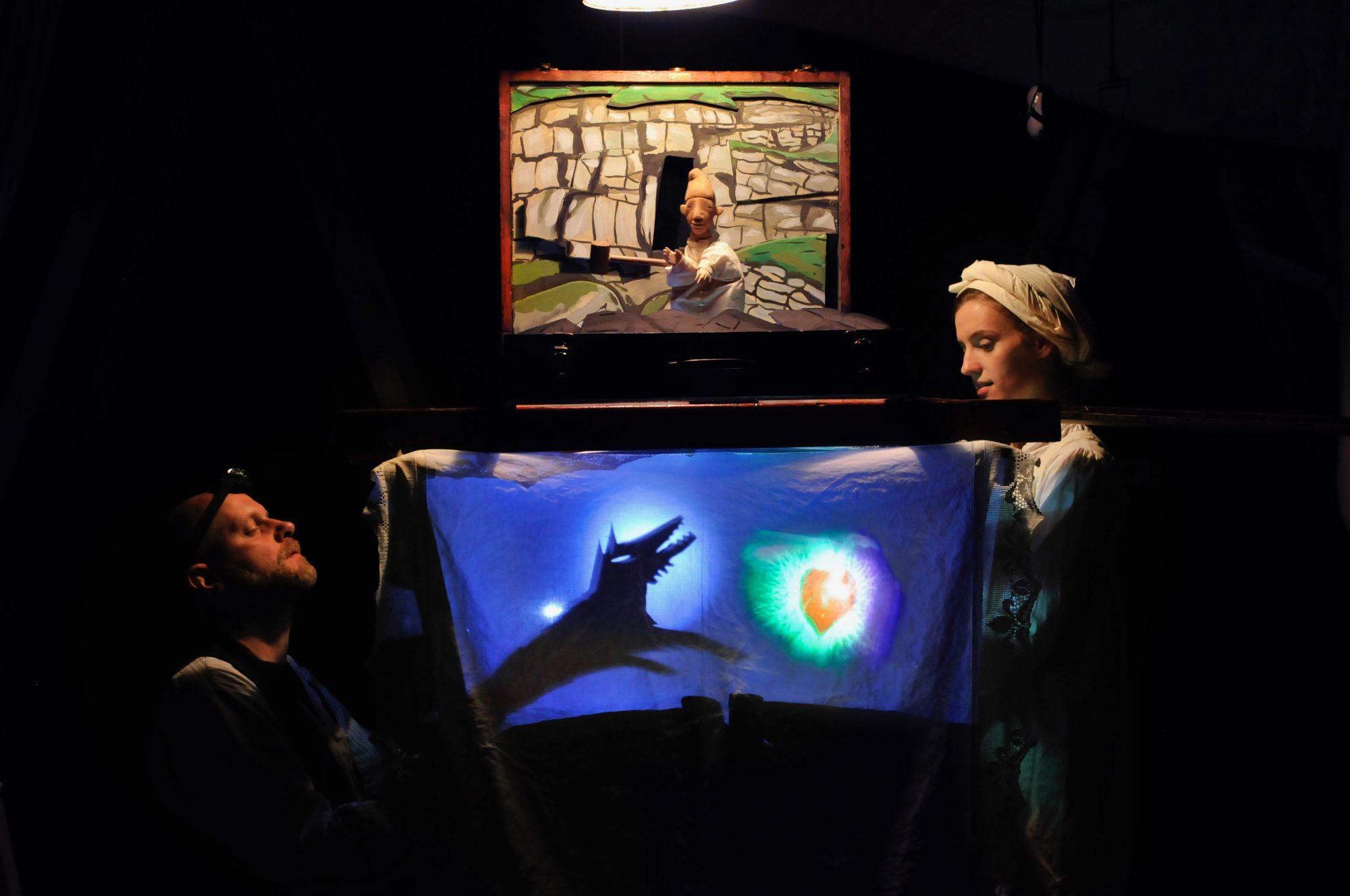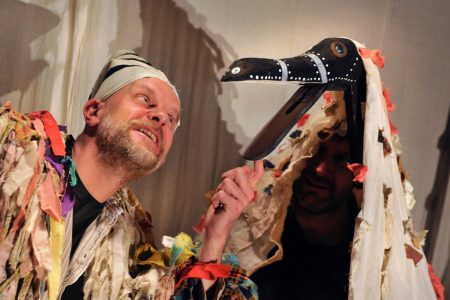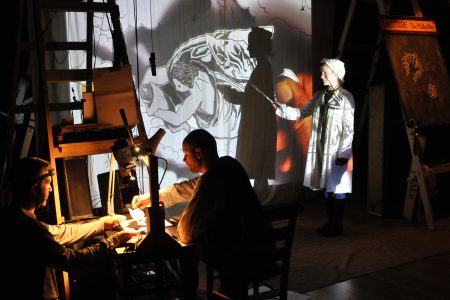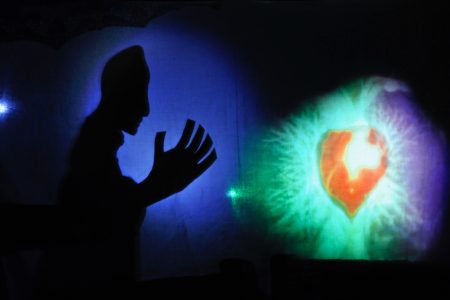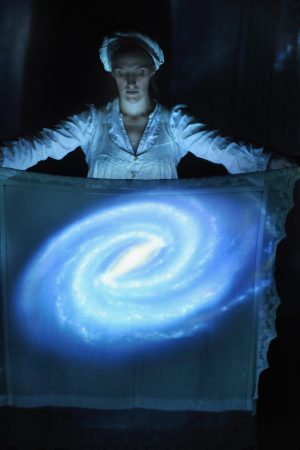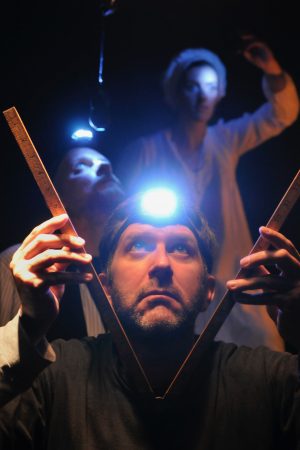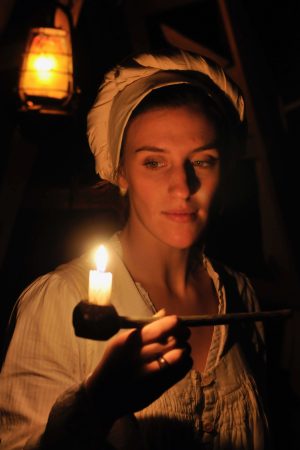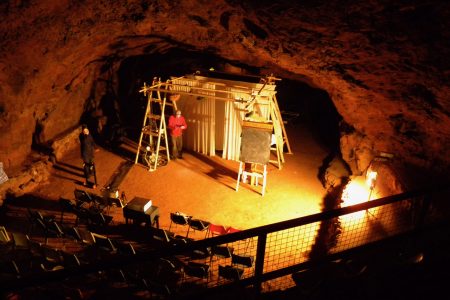 After Veil I felt that I was in a kind of limbo. I wasn’t at all sure where to go next. I had been delighted with Veil and wasn’t sure how I could better it, especially now that budgets had been reduced again. In terms of the forms of visual and physical theatre that we had developed over the years, it seemed we had, for now anyway, exhausted them – and I didn’t want to go on repeating myself.
After Veil I felt that I was in a kind of limbo. I wasn’t at all sure where to go next. I had been delighted with Veil and wasn’t sure how I could better it, especially now that budgets had been reduced again. In terms of the forms of visual and physical theatre that we had developed over the years, it seemed we had, for now anyway, exhausted them – and I didn’t want to go on repeating myself.
Alison was now working almost independently from me within the company. She successfully focused on developing the Boo space both as a venue and a place where she could pursue her interest in children’s theatre. That all seemed like good news. It meant that we had a successor Artistic Director in place, and it gave me the freedom to experiment.
I had been directing part of a local project called Valley of Stone, about the quarrying heritage of the Rossendale Valley. Valley of Stone was organised by Rossendale Groundwork and well funded by the Heritage Lottery Fund. One thing I enjoyed was that it enabled me to work with other visual artists and film-makers. It also revived an interest in geology and the concept of Deep Time. The project was multi-faceted, and it provided an opportunity to try a new approach to creating a production.
The artist Tracey Holland had worked on Valley of Stone, where she made a short film about the geology of Rossendale. I decided to use this as a starting point; a kind of touchstone. So I wrote a freewheeling play drawing intuitively on all sorts of sources. Folk stories, myths, astronomy, and with a quirky but pedagogical slant to it. Another influence was a young part-Chinese animator, Steff Lee, who was recommended to us through a contact of Alisons. From the beginning Steff possessed an uncanny ability to read my mind and put it onto film.
I also tried experimental production techniques. We used wind-up lights on stage, projecting live camera feed, and bringing the backstage to the front stage. Mostly I tore up the Horse + Bamboo how-to-do-it manual and started the process of creating theatre afresh.
It wasn’t to everyone’s liking. At one show someone wrote in the Comments Book ‘What have you done with Horse + Bamboo?’. But to others Deep Time Cabaret was refreshing and stimulating. For me it shook things around enough to forget the financial disappointment of the Veil tour. It also gave me the space and the opportunity to find a new approach to making theatre.
Punch and Judy struggle over a slapstick at the centre of a twirling galaxy while Stephen Hawking’s mechanical voice asks, ‘Why are we here? Where did we come from?’ Mummers festooned in cloth. An old union of mineworkers’ song, sung with gusto. A film by Tracey Holland about the Rossendale Hills. A recounting of the Greek myth of the origin of the Milky Way, with paper figures animated in real-time and projected onto a screen. Swinging light bulbs and a constructivist set. Images of medieval agriculture.
Deep Time Cabaret is a mash-up of folk tradition and emergent technology, old questions and new problems, a profound meditation on current ecological imbalances, and an applied theatre project. The ‘deep time’ in the title refers to geological time, which operates on an entirely different scale to human time. From the perspective of deep time, Greek myth, Stephen Hawking, and all of human history are part of the same moment. Our scamperings across the planet’s surface are of trivial significance, but the damage our industries have wrought is consequential, though perhaps still reversible. The problem is our lack of attention to and appreciation for the world around us. Quoting American poet Ralph Waldo Emerson, a narrator intones: ‘If the stars should appear but one night every thousand years how man would marvel and stare.’
Horse + Bamboo encourage their audience to marvel and stare, not only at the rare spectacle they have compiled, which is both responsive to their own ecological position and universal in ambition, but more importantly at the universe outside the performance. The work is abstractly poetic, but also entertaining, with a narrative enacted by hand puppets at the work’s core. A Punch-like figure, dressed in white with a turban wrapped around his head, mines the heart of the earth and takes it back to his domicile, storing it in a coffin-like container. The heart transforms into a woman, who shortly expires. Punch then restores her to her proper place in the bowels of the earth. Punch is deftly swazzled and while I would have preferred to have seen Punch’s anarchic streak on greater display (his functionality reminding me of American WPA Punch and Judy shows which cast Punch as a traffic warden), I admit I am a sucker for Old Red Nose, and appreciate every attempt at updating and re-contextualising him. Others, perhaps, will have similar reactions to other aspects of this richly intertextual production. The performance implicates the audience. It makes us more than witnesses to environmental degradation. We are ‘here’ not only to enjoy Punch’s antics, but for something more. We have been hailed. What we do now is up to us.
BOB FRITH (wr. dir), JONNY QUICK, SONYA MOORHEAD, MARK WHITAKER, LOZ KAYE (m), STEFF LEE (animations), TRACEY HOLLAND (film)
